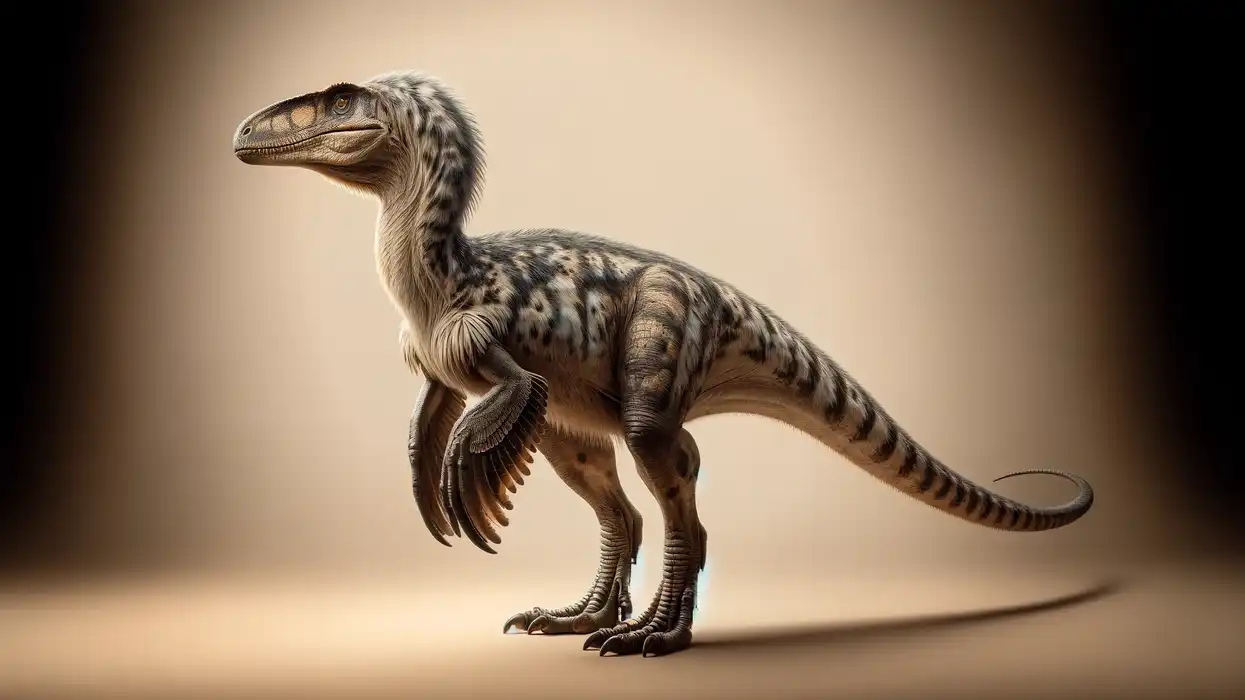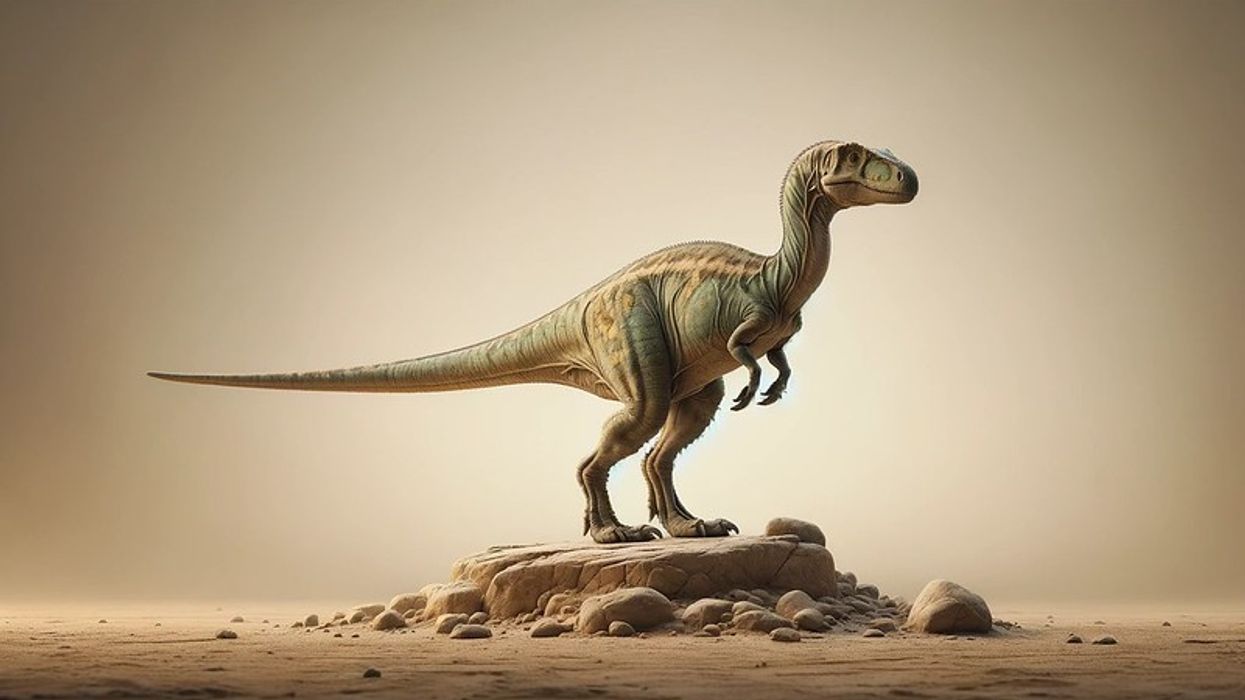The Dracopelta dinosaur, or Dracopelta zbyszewskii, was a herbivore.
It was a genus of ankylosaurus dinosaurs and existed about 145 million years ago. Dracopelta is recognized to be the first ankylosaur from the Late Jurassic and now exists as the basalmost member of ankylosaurs, however being initially classified in the nodosauridae.
The fossils of the partial Dracopelta skeleton have been recovered from two places in Portugal.
The first place where their fossils were found was in Mafra and the second type to be found was in the Farta Pao Formation.
Being described by Peter Galton in 1980, the fossils of these dinosaurs that were found in the first locality were said to be from the Early Cretaceous and those from the second region were said to have lived during the Late Jurassic.
The holotype of Dracopelta zbyszewsii is a partial skeleton that contains the rib cage which has 13 dorsal vertebrae and has a dermal shield-like structure.
Paleontologists through intensive research are sure that these dinosaurs come from the Ankylosaur genus, but no one knows for certain if the genus was an actual ankylosaurid or a nodosaurid.
In fact, it was originally classified as nodosauridae. These dinosaurs, which come from the ankylosaurid classification, lived in terrestrial habitats sharing similar diet patterns to different types of other herbivorous animals like sheep, cows, bulls, buffalos, rabbits, and so on.
Scientists have not been able to determine how these animals looked like but they closely resemble crocodiles that could walk.
If you'd like to learn more about similar dinosaurs, check out our Mymoorapelta interesting facts for kids or Palaeoscincus fun facts that you're sure to love!
Dracopelta Interesting Facts
How do you pronounce 'Dracopelta'?
Dracopelta dinosaurs are pronounced as 'Dray-coe-pel-tah'.
What type of dinosaur was a Dracopelta?
Dracopelta was a type of ankylosaur. They were originally described by Peter Galton and holotype consists of a partial skeleton.
In which geological period did Dracopelta roam the earth?
They belonged to the Late Jurassic and Early Cretaceous periods and were found in Portugal.
When did Dracopelta become extinct?
The Dracopelta became extinct about 65-80 million years ago, just like all other dinosaur species.
Where did Dracopelta live?
This herbivore is believed to have lived in terrestrial habitats like wetlands, estuaries, forests, and near riverbeds and lakes. Ankylosaurus also lived alongside dinosaurs such as Tyrannosaurus, Triceratops, and Edmontosaurus.
What was the Dracopelta's habitat?
Dracopelta (Dracopelta zbyszewskii) was believed to have made its habitat in wetlands as well as upland areas since they were part of the ankylosaur species.
Who did Dracopelta live with?
Coming from the Ankylosauria classification, these species are believed to have lived by themselves. They moved by themselves from habitat to habitat, searching for food.
How long did a Dracopelta live?
Through research, scientists have stated that Dracopelta has lived from the Tithonian Age to 145 million years ago on terrestrial habitats.
How did they reproduce?
Dracopelta zbyszewskii was oviparous. This means that they reproduced by laying eggs.
The female laid about one to two eggs and incubated them for a brief period of time. The young dinosaurs became independent at an earlier stage. The nesting behavior of the parents is not known as the remains found were not enough to make conclusions on how they nurtured and cared for their young.
Dracopelta Fun Facts
What did Dracopelta look like?
 We've been unable to source an image of Dracopelta and have used an image of a skeleton of Tyrannosaurus Rex instead. If you are able to provide us with a royalty-free image of Dracopelta, we would be happy to credit you. Please contact us at hello@kidadl.com.
We've been unable to source an image of Dracopelta and have used an image of a skeleton of Tyrannosaurus Rex instead. If you are able to provide us with a royalty-free image of Dracopelta, we would be happy to credit you. Please contact us at hello@kidadl.com. There wasn't much known about the Dracopelta since only a partial skeleton was found. But being an ankylosaur, this species, that lived during the Late Jurassic to Early Cretaceous, was described to have certain types of scutes or massive knobs of bone on its back and had five different types of armor.
It was similar to that of the crocodiles and some lizards. In fact, these bones form within the skin and act as a shield for these animals!
How many bones did a Dracopelta have?
Since the complete skeleton of the Dracopelta zbyszewskii is yet to be found, it is difficult to determine the number of bones that this animal had. So far, only a partial skeleton has been found which consists of a rib cage with thirteen dorsal vertebrae and there are other parts of the holotype to be discovered by paleontologists.
However, they would have definitely have had more than 200 bones!
How did they communicate?
The Dracopelta zbyszewskii species may have communicated with each other by hissing, clapping their jaws together, grinding against upper jaws, rubbing scales together, or use of environmental materials like splashing water or breaking trees.
How big was Dracopelta?
It is difficult to estimate the animal's size from the incomplete remains, but it was clearly a small animal, approximately 39 in (1 m) long, similar to the length of a dolphin! The Dracopelta height is currently unknown.
How fast could a Dracopelta move?
Since the Dracopelta zbyszewskii was an ankylosaur, it was believed to have moved at an average speed of 6 mph (9.6 kph).
How much did a Dracopelta weigh?
There is very little information on the weight of these animals considering the lack of sufficient parts of the skeleton to determine this. Scientists are still trying to find out this information through intensive and detailed research.
What were the male and female names of the species?
There are no sex-specific male or female names for these species that lived during the Late Jurassic and Early Cretaceous.
What would you call a baby Dracopelta?
A baby Dracopelta is called a nestling or a hatchling, like other dinosaur babies!
What did they eat?
These animals with five different armors were herbivores and ate plants and vegetation. Living in terrestrial habitats like wetlands, uplands, river beds, and estuaries, the Dracopelta shared its diet with other herbivores like sheep, cows, zebras, and other cattle.
How aggressive were they?
Scientific research says that these animals were unpredictable and could be aggressive at any moment. More aggressive behaviors would have been displayed by them when either provoked or threatened.
Did you know...
The Dracopelta species was named in honor of the paleontologist Georges Zbyszewski, a Portuguese vertebrate paleontologist!
Why are they called Dracopelta?
Dracopelta means 'small shield dragon'. It was equipped with five different types of armor-like structures. This would have proved to be advantageous for them when they came face-to-face with any sort of danger or threat.
Would Dracopelta bite?
It is not known at the moment if the Dracopelta can bite or not, but they probably would have since sharp teeth are required to bite off leaves and plants.
Here at Kidadl, we have carefully created lots of interesting family-friendly dinosaur facts for everyone to discover! Learn more about some other creatures from our Liaoningosaurus facts, or Cryptosaurus facts for kids.
You can even occupy yourself at home by coloring in one of our free printable Dracopelta coloring pages.
*We've been unable to source an image of Dracopelta and have used an image of a skeleton of Brontosaurus instead. If you are able to provide us with a royalty-free image of Dracopelta, we would be happy to credit you. Please contact us at hello@kidadl.com.










